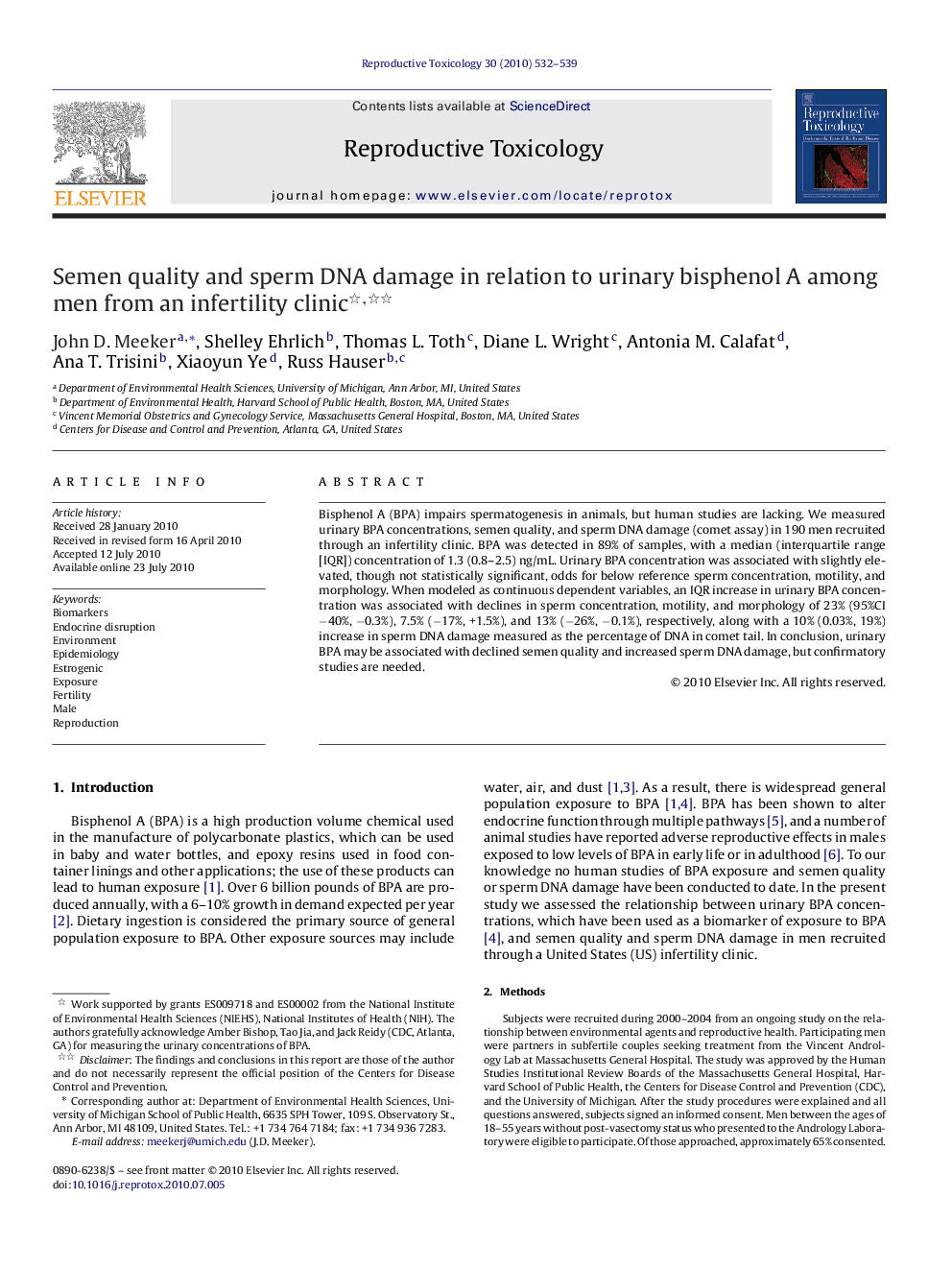| Article ID | Journal | Published Year | Pages | File Type |
|---|---|---|---|---|
| 2594149 | Reproductive Toxicology | 2010 | 8 Pages |
Bisphenol A (BPA) impairs spermatogenesis in animals, but human studies are lacking. We measured urinary BPA concentrations, semen quality, and sperm DNA damage (comet assay) in 190 men recruited through an infertility clinic. BPA was detected in 89% of samples, with a median (interquartile range [IQR]) concentration of 1.3 (0.8–2.5) ng/mL. Urinary BPA concentration was associated with slightly elevated, though not statistically significant, odds for below reference sperm concentration, motility, and morphology. When modeled as continuous dependent variables, an IQR increase in urinary BPA concentration was associated with declines in sperm concentration, motility, and morphology of 23% (95%CI −40%, −0.3%), 7.5% (−17%, +1.5%), and 13% (−26%, −0.1%), respectively, along with a 10% (0.03%, 19%) increase in sperm DNA damage measured as the percentage of DNA in comet tail. In conclusion, urinary BPA may be associated with declined semen quality and increased sperm DNA damage, but confirmatory studies are needed.
